Mastering Your Central Heating: A Guide to Efficient and Cost-Effective Warmth
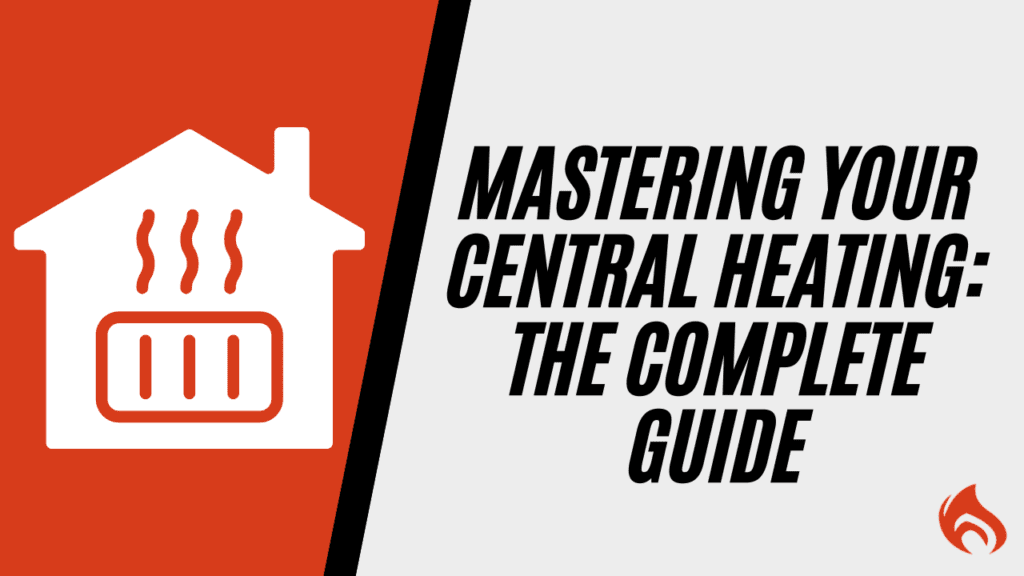
Central heating is vital to any home, providing reliable and efficient warmth during the colder months. However, understanding its various components can help you optimise your system for better efficiency, reduced energy costs, and improved comfort. This guide will explore key aspects of central heating, including thermostats, pumps, motorised valves, controls, radiators, and boilers.
Table of Contents
Understanding Your Central Heating Thermostat
The thermostat is the brain of your heating system, playing a crucial role in maintaining a comfortable temperature while minimising energy waste. It monitors the ambient temperature and signals the boiler to turn on or off as needed, ensuring that your home remains at the desired warmth level without unnecessary energy use.
Types of Thermostats
- Manual Thermostats: Basic models that require manual adjustment to change temperature settings.
- Programmable Thermostats: Allow you to pre-set temperature levels for different times of the day, optimising energy efficiency.
- Smart Thermostats: Advanced models that connect to Wi-Fi, enabling remote control via smartphone apps and learning your schedule for automatic adjustments.
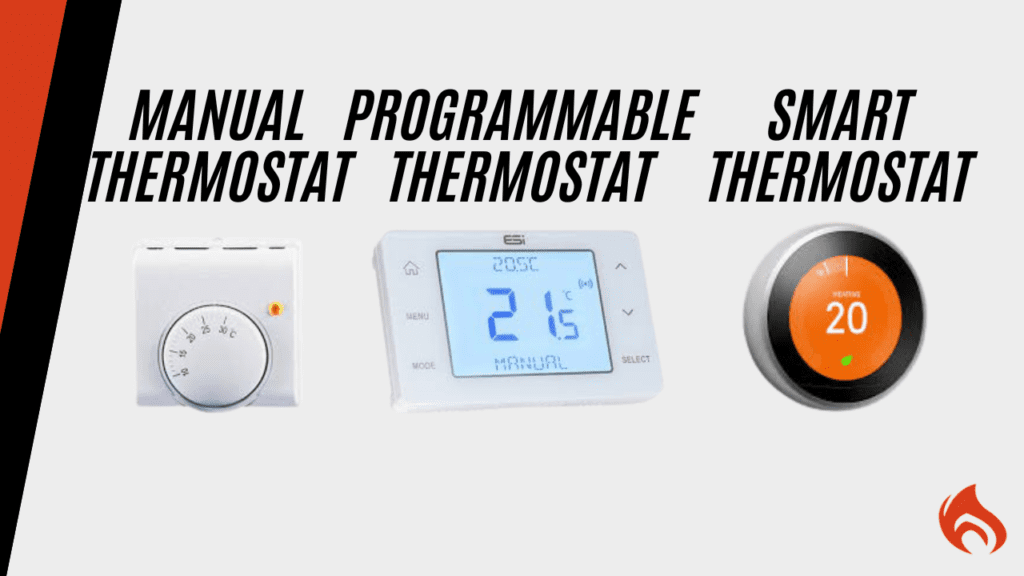
How to Use Your Thermostat Effectively
Set an optimal temperature: A comfortable home temperature is typically between 18-21°C. Lowering the thermostat by just 1°C can save up to 10% on heating bills.
Schedule heating times: Use a programmable thermostat to heat your home only when needed, such as in the morning and evening.
Avoid overheating: Setting the thermostat too high wastes energy. Instead, wear warmer clothing indoors and use heating efficiently.
Keep thermostats away from heat sources: Placing your thermostat near radiators, direct sunlight, or electrical appliances can cause inaccurate readings and inefficient heating cycles.
Utilise zoning: If your system supports it, use zone controls to heat only occupied areas instead of the entire house.
Stay Warm All Year with a Boiler You Can Trust
Installed By Qualified Heating Engineer
Central Heating Costs: 10 Tips for Reduction
Heating costs can be a significant expense, but implementing energy-efficient practices can help reduce your bills. Here are ten cost-saving tips:
Schedule Regular Maintenance – Ensure your system is serviced annually to maintain efficiency and prevent breakdowns.
Improve Home Insulation – Insulate walls, floors, and loft spaces to minimise heat loss and lower energy consumption.
Use a Programmable Thermostat – Set different temperatures for different times of the day to optimise heating efficiency.
Install Thermostatic Radiator Valves (TRVs) – Control the temperature of individual rooms to avoid heating unused spaces.
Bleed Radiators Regularly – Remove trapped air in your radiators to ensure even heat distribution and system efficiency.
Seal Drafts and Gaps – Check windows, doors, and vents for drafts and seal any gaps to prevent heat loss.
Lower the Thermostat by 1°C – A small reduction in temperature can lead to substantial savings on energy bills.
Use Curtains and Blinds Wisely – Open curtains during the day to let in heat from the sun and close them at night to retain warmth.
Upgrade to an Energy-Efficient Boiler – If your boiler is over 10 years old, replacing it with a modern, high-efficiency model can reduce heating costs.
Utilise Smart Heating Controls – Install smart thermostats and heating apps to monitor and control heating remotely for maximum efficiency.
By following these energy-saving strategies, you can reduce your heating costs while maintaining a warm and comfortable home.
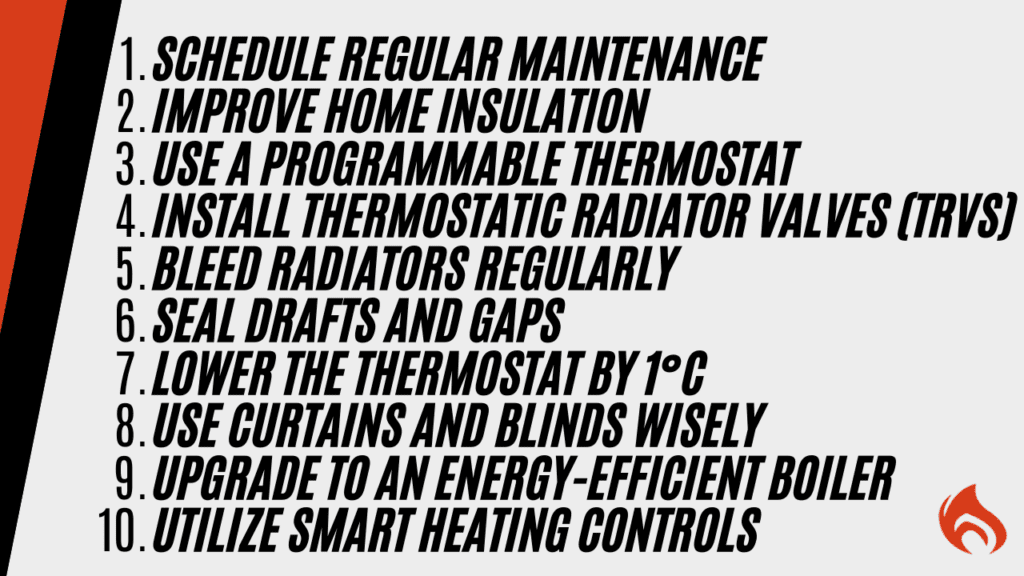
Central Heating Controls: Simplifying System Management
Modern central heating controls help you manage your heating efficiently. Some common types include:
Timers – These allow you to set heating schedules to match your routine. For example, you can program your heating to turn on an hour before you wake up and turn off when you leave for work.
Zone Controls – These let you heat specific areas of your home separately. For example, if you only use the living room in the evening, you can heat just that area instead of the whole house.
Motorised Valves – These automatically open and close to direct hot water to different parts of the heating system. This ensures heat is only delivered where needed, reducing waste.
Smart Controls – These allow you to control your heating remotely via a smartphone or tablet. For instance, if you forget to turn your heating off before leaving home, you can switch it off from your phone, saving energy.
By using these controls effectively, you can reduce energy consumption, improve comfort, and lower heating costs.
Central Heating Radiators: Efficient Heat Distribution
Radiators play a key role in evenly distributing heat throughout your home. Choosing the right radiator setup ensures optimal heating efficiency and comfort.
Key Factors When Choosing Radiators
Size and BTU Output: Ensure radiators are appropriately sized for each room. The BTU (British Thermal Unit) rating should match the heating requirements of the space to avoid underheating or overheating.
Number of Panels: Single-panel radiators provide less heat than double or triple-panel models. More panels enhance heat efficiency, making them ideal for larger rooms.
Style vs. Efficiency: While designer radiators add aesthetic appeal, they often produce less heat than traditional models. Always consider heat output over style for primary heating sources.
Material: Different radiator materials conduct heat differently. Aluminum radiators heat up and cool down quickly, while cast iron radiators retain heat longer, making them ideal for consistent warmth.
Radiator Placement for Maximum Efficiency
Under Windows: Positioning radiators under windows helps counteract cold drafts and promotes even heat distribution.
Away from Furniture: Placing furniture in front of radiators blocks heat circulation, reducing efficiency.
Using Reflective Panels: Installing reflective foil behind radiators prevents heat from being absorbed into walls, directing it back into the room.
Balancing Your Radiators: Adjust radiator valves to ensure each room heats up evenly, preventing some radiators from overheating while others remain cool.
Regularly maintaining your radiators by bleeding trapped air, checking for leaks, and ensuring proper water flow enhances their efficiency and longevity.
Motorised Valves: Controlling Water Flow Effectively
Motorised valves help regulate the distribution of hot water in your central heating system by directing it to either your radiators, hot water cylinders, or both, depending on demand. These electrically operated valves open and close as needed, ensuring efficient heating and hot water supply throughout your home.
Types of Motorised Valves
2-Port Valves: These valves control the flow of hot water to a single component, either the radiators or the hot water system. When the heating is turned off, the valve closes, stopping the flow of hot water.
3-Port Valves: These are more versatile and manage both heating and hot water simultaneously. They come in two configurations:
Mid-Position Valve: Allows hot water to be directed to either the heating, hot water cylinder, or both.
Diverter Valve: Directs water to only one system at a time—either heating or hot water.
Stay Warm All Year with a Boiler You Can Trust
Installed By Qualified Heating Engineer
Common Issues and Maintenance Tips
A faulty motorised valve can cause heating inefficiencies, such as radiators not warming up properly or hot water failing to reach the taps. Regular maintenance can prevent these issues:
Listen for unusual noises: Clicking or whirring sounds may indicate a stuck valve that needs lubrication or replacement.
Check for stuck valves: If your heating isn’t turning on, the valve may be jammed in one position and require manual adjustment or replacement.
Ensure proper wiring connections: Loose or faulty wiring can prevent the valve from receiving power, leading to malfunction.
Inspect the actuator head: The actuator (the motorised part of the valve) can wear out over time, affecting its ability to open or close the valve properly.
Replace ageing valves: If a valve is consistently failing, replacing it with a modern, energy-efficient version can improve heating performance and reduce energy costs.
Check for leaks: Any signs of water leakage around the valve should be addressed immediately to prevent further damage to the system.
Test system performance: Regularly test your heating and hot water controls to ensure the motorized valve is responding correctly.
Schedule servicing: Having a heating engineer inspect and maintain motorised valves ensures they function correctly and efficiently, preventing costly breakdowns.
Well-maintained motorised valves improve system performance by ensuring that heat and hot water are delivered exactly where needed, preventing unnecessary energy wastage and keeping your home comfortable year-round.

The Central Heating Pump: Circulating Warmth Efficiently
The central heating pump plays a crucial role by circulating hot water from the boiler to radiators throughout your home. Without a properly functioning pump, your heating system may become inefficient, causing some radiators to heat up slower than others or not at all.
How the Central Heating Pump Works
The pump operates by pushing heated water from the boiler through the pipework to the radiators. Once the radiators have absorbed the heat, the cooler water returns to the boiler to be reheated. This continuous circulation ensures an even and consistent distribution of heat throughout the home.
Choosing the Right Central Heating Pump
When selecting a pump, consider factors such as:
Flow rate: Higher flow rates ensure even heat distribution and help prevent cold spots.
Power efficiency: Modern energy-efficient pumps consume less electricity, reducing energy costs.
Speed settings: Some pumps have adjustable speed settings to tailor the water circulation to your home’s needs.
Compatibility: Ensure the pump is suitable for your heating system (combi boilers don’t require an additional pump).
Maintaining Your Central Heating Pump
Regular maintenance is crucial for keeping the pump running efficiently and preventing breakdowns. Here are some key maintenance tips:
Bleed your radiators: Air trapped in the system can reduce the pump’s efficiency, so bleeding your radiators helps maintain smooth operation.
Check for leaks: Any signs of water leakage around the pump should be addressed immediately to avoid damage.
Clean the pump filter: Over time, dirt and debris can build up, restricting flow and causing inefficiency.
Listen for unusual noises: If your pump is making excessive noise, it may indicate trapped air, wear and tear, or failing components.
Schedule servicing: Having a professional inspect the pump annually ensures it remains in good working condition.
A well-maintained pump not only extends the life of your heating system but also helps keep energy costs down by ensuring the efficient circulation of hot water.
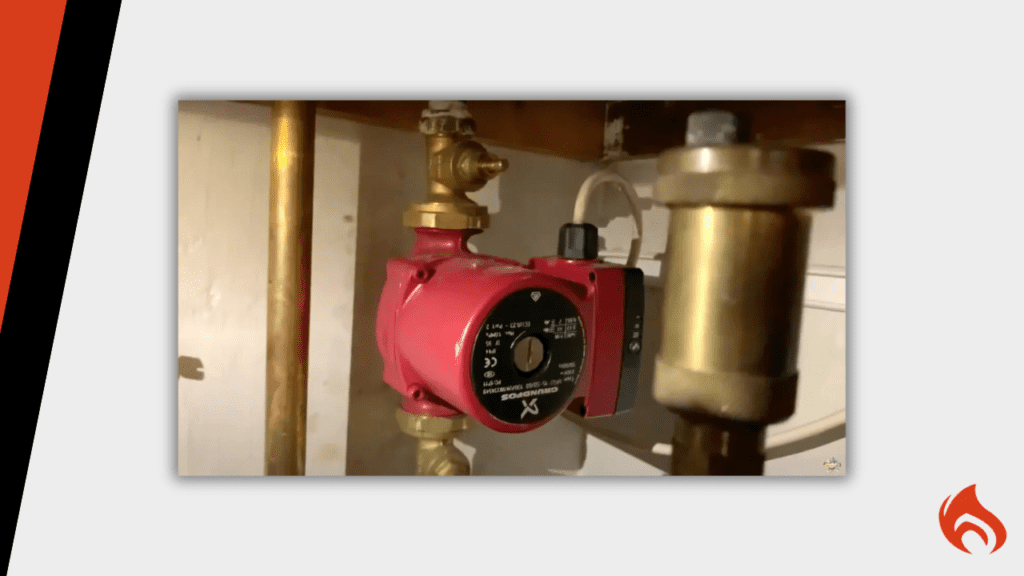
Choosing the Right Boiler for Your Home
The boiler is the heart of any central heating system, supplying hot water and warmth. Choosing the right type is essential for efficiency, reliability, and cost-effectiveness.
Types of Boilers
Combi Boiler: Ideal for small to medium-sized homes, a combination boiler provides instant hot water without the need for a separate storage cylinder. Since it heats water on demand, it is space-saving and energy-efficient but may struggle with supplying multiple hot water outlets simultaneously.
System Boiler: Suitable for larger homes, a system boiler uses a pressurized hot water cylinder, ensuring improved water pressure and the ability to supply multiple taps at the same time. This setup is ideal for families with higher hot water demand.
Conventional Boiler (Regular Boiler): Best for properties with high water demand, a conventional boiler requires both a cold water storage tank and a hot water cylinder. This type is particularly useful in homes with older heating systems or where multiple water outlets need to be used at once without pressure loss.
Factors to Consider When Choosing a Boiler
Household Size and Water Demand: A small flat or apartment might only need a combi boiler, whereas a large family home with multiple bathrooms may require a system or conventional boiler.
Available Space: If space is limited, a combi boiler is the most compact option since it does not require a storage tank.
Water Pressure: If you have low water pressure in your area, a conventional boiler with a gravity-fed system may be necessary.
Energy Efficiency: Look for a boiler with an A-rated efficiency label to ensure minimal energy wastage and reduced heating bills.
Installation Costs: While a combi boiler is usually cheaper and quicker to install, a system or conventional boiler may require additional pipework and storage, increasing upfront costs.
Future-Proofing: If you are planning to expand your home or increase water usage, opting for a more powerful boiler might be a smarter long-term investment.
Boiler Maintenance and Efficiency Tips
Annual Servicing: Have your boiler checked by a professional engineer once a year to maintain efficiency and detect any potential issues early.
Bleed Radiators Regularly: Removing trapped air from radiators ensures that heat is distributed evenly throughout your home.
Monitor Pressure Levels: Keep an eye on your boiler’s pressure gauge—low pressure can indicate a system leak or require topping up.
Use a Smart Thermostat: Upgrading to a smart thermostat helps optimize heating schedules and reduce energy waste.
Check for Unusual Noises: Banging or whistling sounds from your boiler may indicate limescale buildup or other internal issues that need addressing.
Choosing the right boiler and maintaining it properly ensures a reliable and energy-efficient heating system for your home, keeping you warm while keeping energy costs under control.
OVERALL: Optimizing Your Central Heating System
By understanding and managing the key components of your central heating system—thermostats, pumps, radiators, motorized valves, and boilers—you can maximize efficiency, reduce energy costs, and enjoy consistent warmth throughout the colder months. Regular maintenance, smart controls, and energy-saving practices all contribute to a cost-effective and comfortable home.
If you need professional advice on upgrading or maintaining your central heating system, get in touch with a qualified heating engineer for expert guidance.
More Tips & Advice

How Often Should I Service My Boiler?
How Often Should I Service My Boiler? Table of Contents Picture this: it’s the middle of winter, your home is
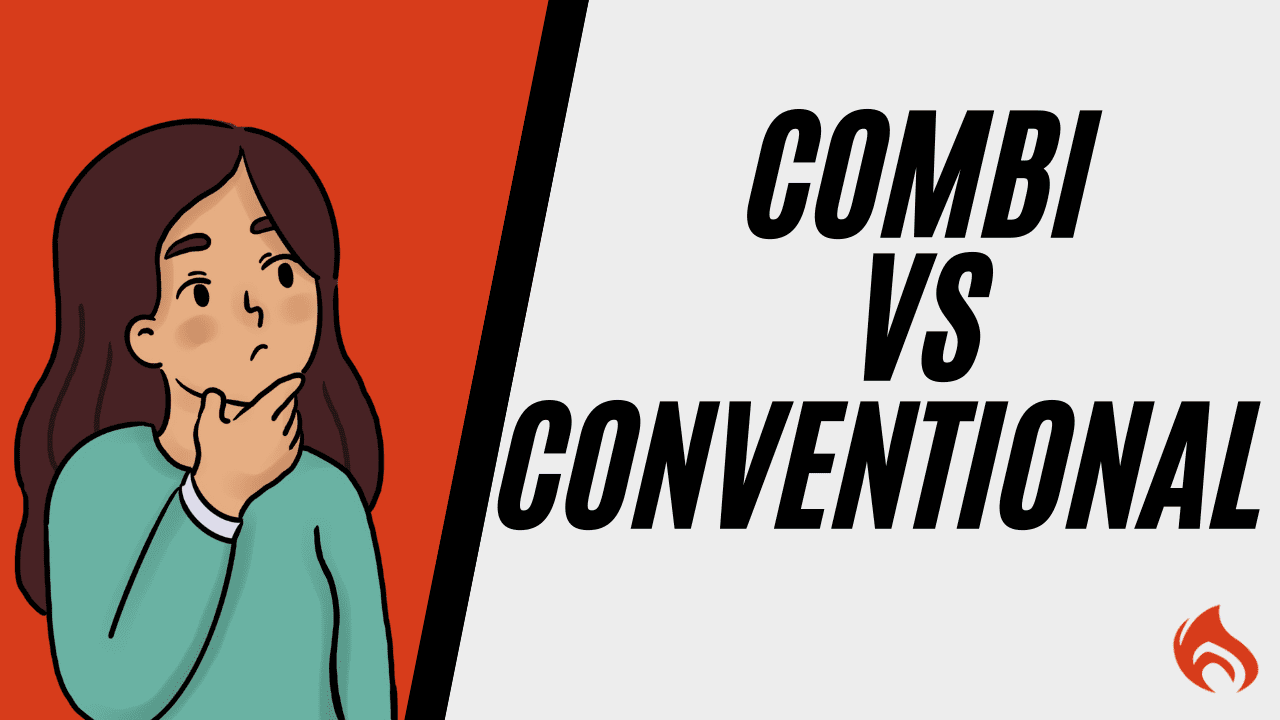
Combi Boiler vs Conventional Boiler: What’s the Difference?
Combi Boiler vs Conventional Boiler: What’s the Difference? Table of Contents Choosing the right boiler for your home isn’t just

